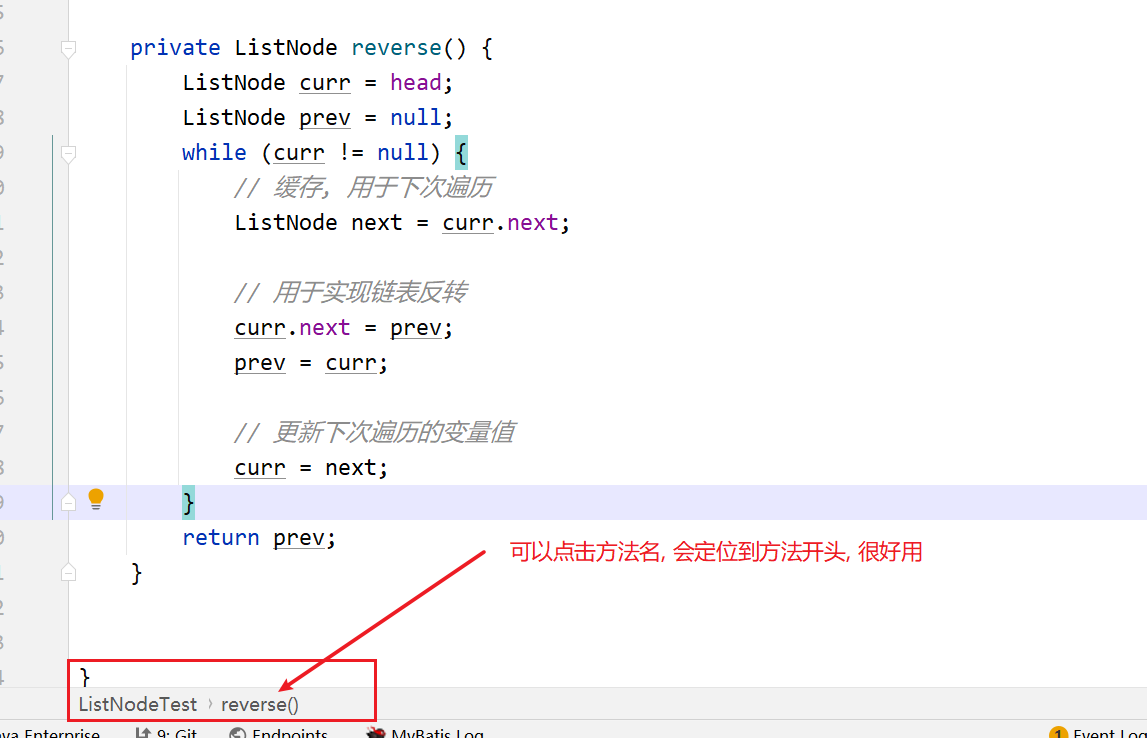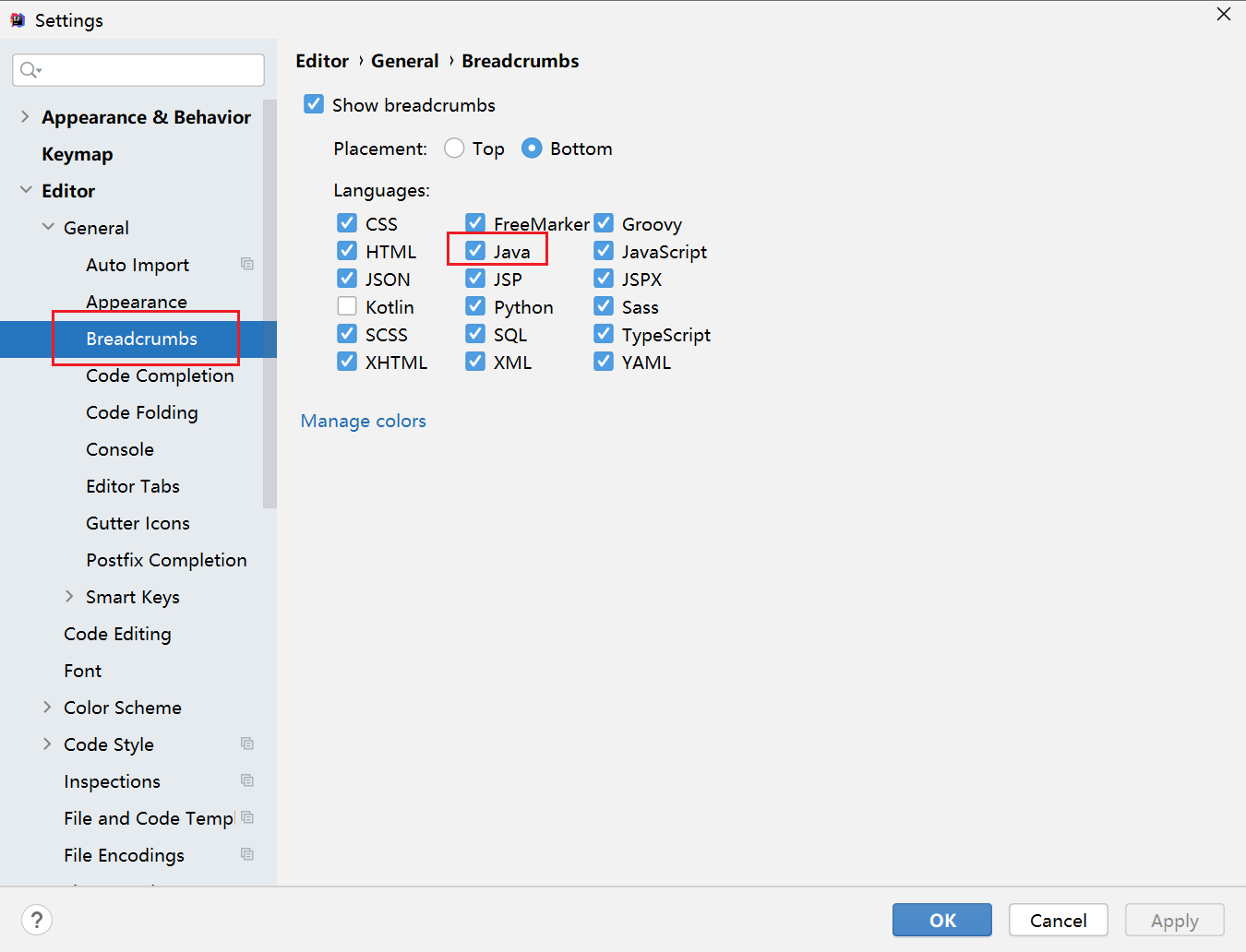idea 如何配置 java 的面包屑导航
本文共 138 字,大约阅读时间需要 1 分钟。
面包屑导航: 可以展示当前光标所在的方法, 用于快速确认当前所在方法和定位当前所在方法的开头

在之前的版本中, idea 该面包屑导航是开启的, 在 2020 版本后, 默认是关闭状态
editor > general > breadcrumbs > 勾选 java > ok
转载地址:http://gpcg.baihongyu.com/
你可能感兴趣的文章
nodejs 运行CMD命令
查看>>
Nodejs+Express+Mysql实现简单用户管理增删改查
查看>>
nodejs+nginx获取真实ip
查看>>
nodejs-mime类型
查看>>
NodeJs——(11)控制权转移next
查看>>
NodeJS、NPM安装配置步骤(windows版本)
查看>>
NodeJS、NPM安装配置步骤(windows版本)
查看>>
nodejs下的express安装
查看>>
nodejs与javascript中的aes加密
查看>>
nodejs中Express 路由统一设置缓存的小技巧
查看>>
nodejs中express的使用
查看>>
Nodejs中搭建一个静态Web服务器,通过读取文件获取响应类型
查看>>
Nodejs中的fs模块的使用
查看>>
NodeJS使用淘宝npm镜像站的各种姿势
查看>>
NodeJs入门知识
查看>>
nodejs包管理工具对比:npm、Yarn、cnpm、npx
查看>>
NodeJs单元测试之 API性能测试
查看>>
nodejs图片转换字节保存
查看>>
nodejs在Liunx上的部署生产方式-PM2
查看>>
nodejs基于art-template模板引擎生成
查看>>